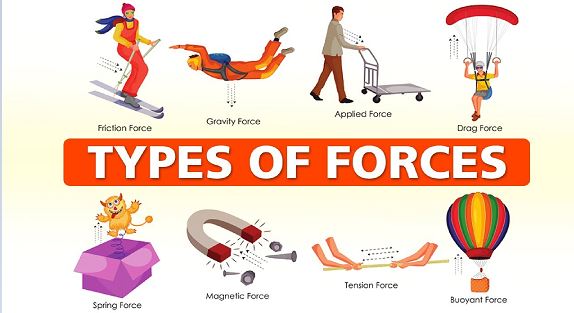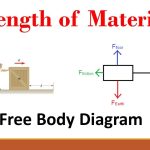Before taking up equilibrium conditions of a body, it is necessary to identify the various forces acting on it. The various forces acting on a body may be grouped into:
(a) Applied Forces
(b) Non-applied Forces
(a) Applied Forces
These are the forces applied externally to a body. Each of the forces is having contact with the body. Depending upon type of their contact with the body, the applied forces may be classified as:
(i) Point Force
(ii) Distributed Forces
(i) Point Force:
It is the one which has got contact with the body at a point. Practically there is no force which will have contact with the body at a single point. However, when the contact area is small compared to the other dimensions in the problem, for simplicity of calculation the force may be considered as a point load. If a person stands on a ladder, his weight be taken as an applied point load [Fig. 1.2]. Characteristics of such forces are already explained in Art. 1.1.
(ii) Distributed Forces:
Distributed forces may act over a line, a surface or a volume. Correspondingly they are known as linear, surface and body forces.
Linear Force: A linear force is one that acts along a line on the body. It is usually represented with abscissa representing the position on the body and ordinate representing the magnitude of the load. An example of this force is a beam subjected to uniformly distributed/uniformly varying or general load. The force ‘dF’ at any small length ‘ds’ is given by

Surface Force: A force acting on the surface of a body is known as surface force. The hydrostatic pressure acting on a Dam is an example of surface force. The force dF acting on any area dA is given by

where ‘p’ is the intensity of force per unit area.
Body Force: A body force is the force exerted from each and every particle of the mass of the body. Example of this type of force is the weight of a block acting on the body under consideration. The body force dF of volume dV is given by

where γ is the force per unit volume.
(b) Non-applied Forces
There are two types of non-applied forces:
(a) Self-weight and
(b) Reactions.
Self-weight: Everybody subjected to gravitational acceleration and hence has got a self-weight.

where m is mass of the body and g is gravitational acceleration (9.81 m/sec2 near the earth surface) Selfweight always acts in vertically downward direction. When analysing equilibrium conditions of a body, selfweight is treated as acting through the centre of gravity of the body. If selfweight is very small, it may be neglected.
Reactions: These are self-adjusting forces developed by the other bodies which come in contact with the body under consideration. According to Newton’s third law of motion, the reactions are equal and opposite to the actions. The reactions adjust themselves to bring the body to equilibrium.


